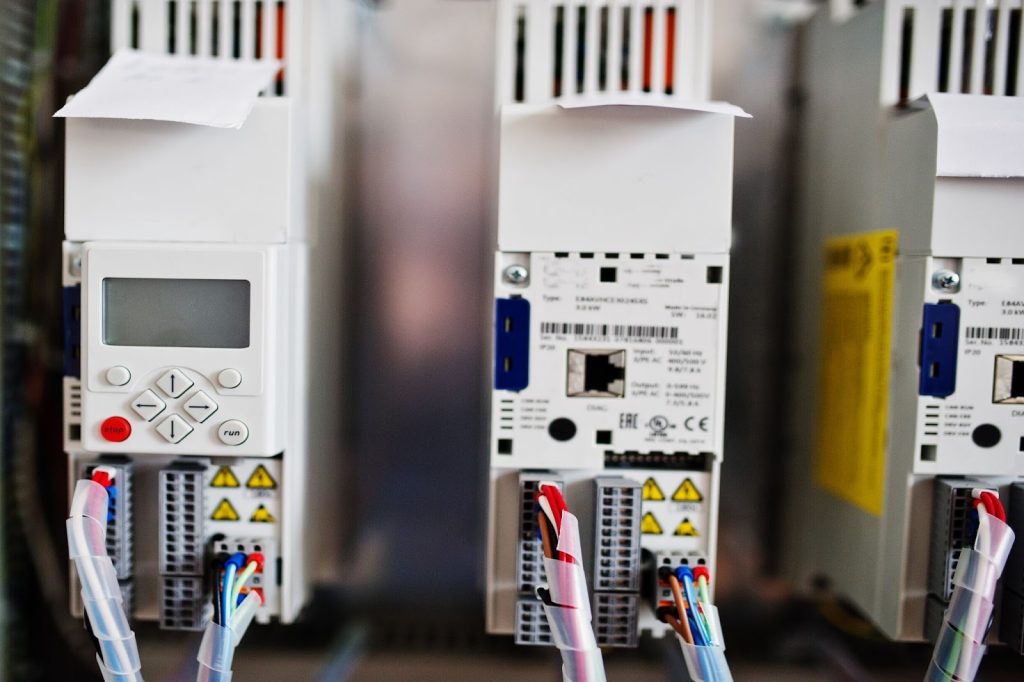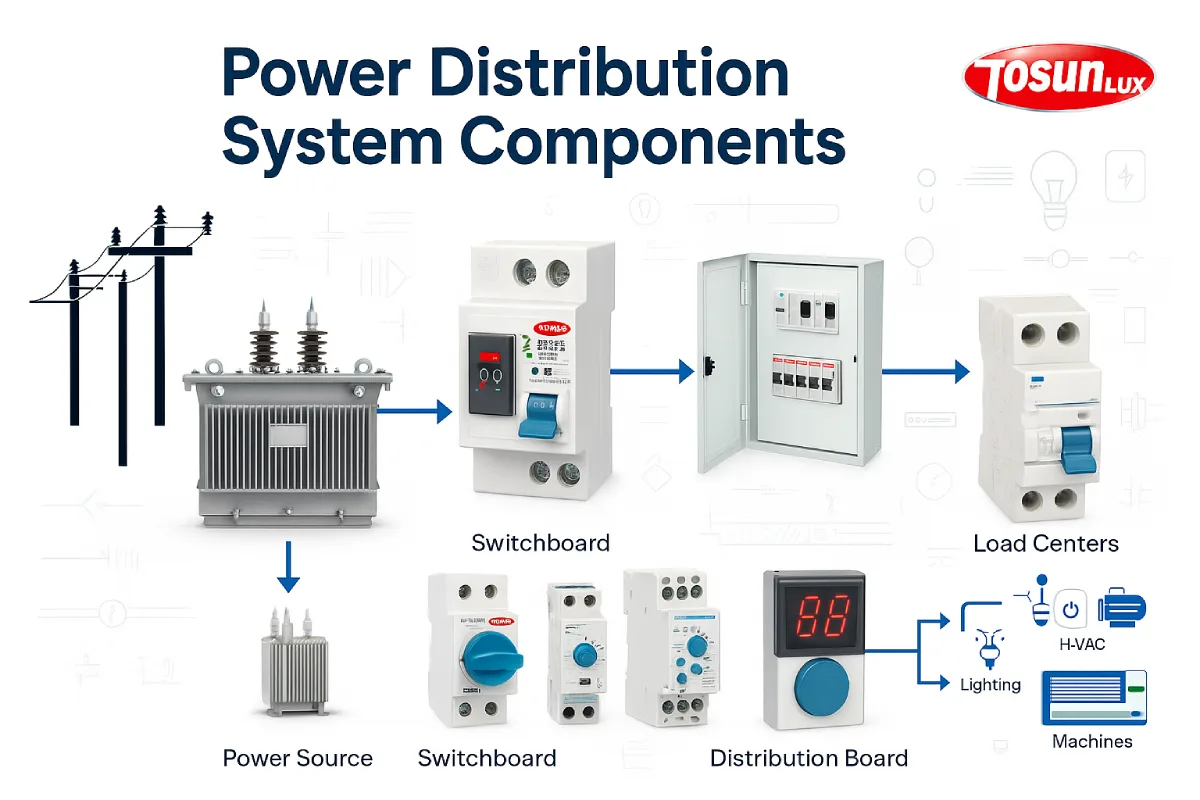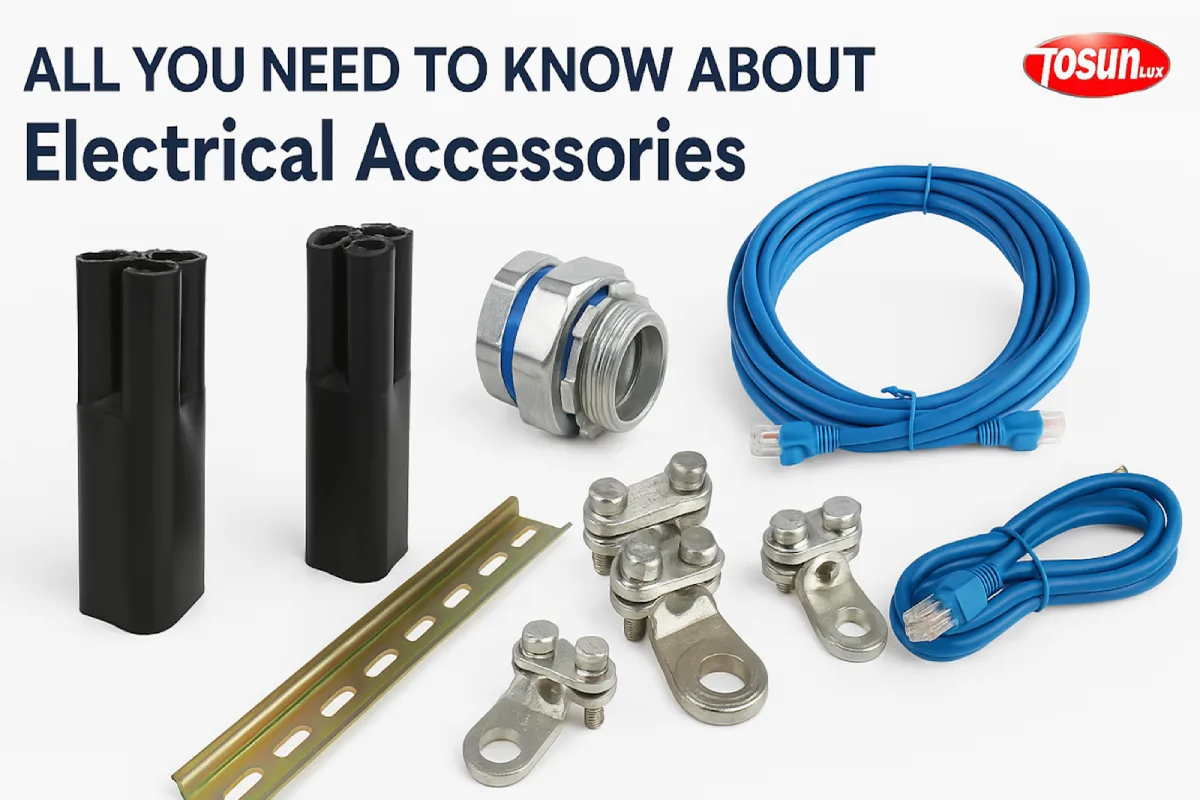Protezione da sovratensioni vs interruttore automatico: qual è la differenza e perché sono necessari entrambi
Indice dei contenuti
Attiva/disattiva
Un interruttore automatico protegge i cavi e previene gli incendi interrompendo l'alimentazione in caso di sovraccarico, mentre un limitatore di sovratensione protegge i dispositivi elettronici da improvvisi picchi di tensione. Questi dispositivi svolgono funzioni molto diverse e, insieme, formano un sistema di protezione completo.
In questo articolo analizzeremo le loro funzioni, le differenze e come l'utilizzo di entrambi garantisca che il tuo spazio sia sicuro, efficiente e pronto per il futuro.
Cos'è un interruttore automatico?
UN interruttore automatico È un dispositivo progettato per interrompere automaticamente il flusso di elettricità in caso di sovraccarico o cortocircuito del sistema. Il suo compito principale è prevenire incendi, danni alle apparecchiature e surriscaldamento dei cavi.
Punti chiave:
- Interrompe la corrente elettrica in condizioni non sicure.
- Installato nel quadro elettrico (scatola dell'interruttore).
- Protegge i cavi e previene gli incendi elettrici.
Quando nel circuito scorre troppa corrente, ad esempio quando troppi elettrodomestici sono collegati a una linea, l'interruttore "scatta" e interrompe l'alimentazione. È riutilizzabile e può essere ripristinato dopo lo scatto.
Che cos'è un limitatore di sovratensione?
UN protettore di sovratensione difende i dispositivi elettronici da improvvisi picchi di tensione, spesso causati da fulmini, commutazioni della rete elettrica o malfunzionamenti delle apparecchiature.
Punti chiave:
- Assorbe o devia la tensione in eccesso dai tuoi dispositivi.
- Disponibile come multipresa o come dispositivo installato su pannello.
- Protegge i dispositivi elettronici da danni o distruzioni.
Consideralo come una guardia del corpo per i tuoi dispositivi: non fermerà un incendio, ma impedirà al tuo costoso computer o alla tua TV di bruciarsi durante un picco di tensione.
Differenze principali: limitatore di sovratensione vs interruttore automatico
Chiariamo la confusione. Sebbene entrambi migliorino sicurezza elettricarisolvono problemi diversi. Ecco come si confrontano:
| Caratteristica | Interruttore automatico | Protettore di sovratensione |
| Funzione principale | Interrompe l'alimentazione per prevenire il surriscaldamento e l'incendio | Devia i picchi di tensione per proteggere i dispositivi elettronici |
| Tipo di protezione | Sovraccarico e cortocircuito | sovratensioni e picchi di tensione |
| Posizione | Quadro elettrico | Presa a muro o pannello |
| Meccanismo di reset | Ripristino manuale della leva | Spesso ha un reset automatico o una spia luminosa |
| Prevengono gli incendi? | SÌ | Indirettamente, proteggendo i dispositivi, non il cablaggio |
| L'uno può sostituire l'altro? | NO | Hanno scopi diversi |
Un limitatore di sovratensione può impedire che un interruttore scatti?
No, non lo farà. Un limitatore di sovratensione non gestisce i problemi di sovracorrenteSe l'interruttore automatico continua a scattare, è dovuto a un sovraccarico o a un cortocircuito, qualcosa che un limitatore di sovratensione non può prevenire.
Ma ecco il punto: L'utilizzo di un limitatore di sovratensione può ridurre i danni ai componenti elettronici, contribuendo a prevenire guasti a valle che potrebbero causare l'intervento dell'interruttore.
I dispositivi di protezione da sovratensioni possono prevenire incendi o fusibili bruciati?
Indirettamente, sì. I dispositivi di protezione da sovratensione aiutano a prevenire il surriscaldamento dei dispositivi limitando i picchi di tensione. Tuttavia, non prevengono gli incendi causati da cablaggi difettosi o sovraccarichi: quello è compito dell'interruttore automatico.
Combinando le due cose, si ottiene una protezione completa:
- IL interruttore salvaguarda l'infrastruttura del tuo edificio.
- IL protettore di sovratensione protegge i tuoi dispositivi elettronici sensibili.
Questa protezione a strati è particolarmente importante nelle aree con reti elettriche instabili o frequenti temporali.
A cosa serve un protettore di circuito?
Un protettore di circuito, spesso un termine generico, si riferisce a qualsiasi dispositivo che protegge i circuiti elettrici. Un interruttore automatico è un tipo di dispositivo, ma lo sono anche i fusibili, gli interruttori differenziali o gli interruttori magnetotermici. Il loro ruolo è quello di interrompere la corrente prima che danneggi i cavi o provochi un incendio.

Da TOSUNlux, ad esempio, offriamo una gamma completa di interruttori magnetotermici (MCCB), interruttori differenziali (RCCB) e interruttori magnetotermici (MCCB) per applicazioni sia residenziali che industriali. Questi dispositivi sono testati e certificati per soddisfare gli standard di sicurezza internazionali.
Tutti i dispositivi di protezione da sovratensione sono uguali?
Assolutamente no. I dispositivi di protezione da sovratensione variano in base a:
- Valutazione Joule (capacità di assorbimento di energia)
- Tempo di risposta
- Tensione di serraggio
- Qualità costruttiva
- Spie luminose e spegnimento automatico
I modelli più economici offrono una protezione minima e potrebbero guastarsi in caso di sovratensioni di notevole entità. I dispositivi di protezione da sovratensioni di alta qualità, come quelli installati direttamente nel quadro elettrico, offrono una protezione più robusta in tutto l'edificio.
Mancia: Cerca protezioni con etichette chiare, certificazioni di sicurezza (ad esempio CE, TUV) e indicatori visivi per sapere quando la protezione è attiva.
Di quale hai bisogno?
La vera risposta è: Entrambi.
Un interruttore differenziale è obbligatorio per legge nella maggior parte dei paesi perché è fondamentale per la sicurezza elettrica. I dispositivi di protezione da sovratensioni, sebbene facoltativi, sono fortemente consigliati per proteggere dispositivi ed elettrodomestici di valore.
Se vivi in una zona con frequenti interruzioni di corrente, temporali o impianti elettrici inaffidabili, un limitatore di sovratensione è indispensabile. Ma anche in ambienti stabili, le case moderne con dispositivi elettronici costosi dovrebbero sempre avere entrambi i sistemi attivi.
Considerazioni finali: combinare per una protezione completa
Un interruttore automatico protegge il tuo edificio. Un limitatore di sovratensione protegge i tuoi dispositivi.
Hai bisogno di entrambi per la massima tranquillità e di una protezione intelligente che duri. TOSUNluxDa oltre 30 anni forniamo soluzioni elettriche affidabili e certificate in tutto il mondo.
Dagli interruttori magnetotermici ai dispositivi di protezione da sovratensione, dall'illuminazione a LED ai contatori di energia, abbiamo tutto ciò che ti serve per rimanere al sicuro e alimentato.
Pronto ad aggiornare la tua protezione? Esplora il nostro gamma completa e ottieni oggi stesso la soluzione giusta.
FAQ: Protezione da sovratensioni vs interruttore automatico
Un limitatore di sovratensione può impedire che un interruttore scatti?
No. Gli scatti degli interruttori sono dovuti a sovraccarichi; i dispositivi di protezione da sovratensioni gestiscono i picchi di tensione.
Qual è la differenza tra un limitatore di sovratensione e una multipresa?
Una multipresa aggiunge prese; un limitatore di sovratensione include una protezione integrata dalla tensione.
I dispositivi di protezione da sovratensioni prevengono gli incendi?
Non direttamente. Aiutano a prevenire il surriscaldamento del dispositivo durante i picchi di tensione.
A cosa serve un protettore di circuito?
Interrompe il flusso di corrente in condizioni pericolose per prevenire danni o incendi.
I dispositivi di protezione da sovratensioni impediscono che i fusibili si brucino?
Possono ridurre lo stress da tensione, ma non impediscono il guasto del fusibile dovuto al sovraccarico.
Tutti i dispositivi di protezione da sovratensioni sono uguali?
No. Differiscono in termini di prestazioni, durata e livello di protezione.
Tel: +86-577-88671000
E-mail: ceo@tosun.com
Skype: tosunelectric
WeChat: +86-139 6881 9286
WhatsApp: +86-139 0587 7291
Indirizzo: Stanza n. 1001 Wenzhou Fortune Center, Station Road, Wenzhou, Cina
RICHIEDI UN PREVENTIVO
Mandaci un messaggio su WhatsApp
 : +86-139 0587 7291
: +86-139 0587 7291 Inglese
Inglese Spagnolo
Spagnolo Russo
Russo Francese
Francese arabo
arabo Portoghese del Brasile
Portoghese del Brasile Ucraino
Ucraino Turco
Turco Polacco
Polacco Paesi Bassi
Paesi Bassi Italiano
Italiano Bahasa Indonesia
Bahasa Indonesia Hindi
Hindi اردو
اردو sfacciato
sfacciato Հայերեն
Հայերեն ไทย
ไทย Mongolo
Mongolo Fascino
Fascino Squalo
Squalo Ellenico
Ellenico


